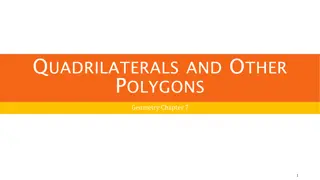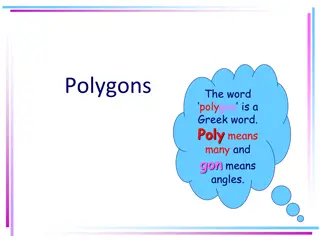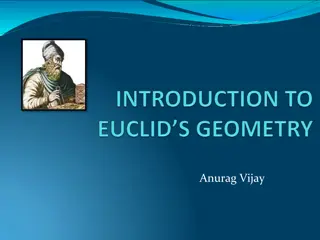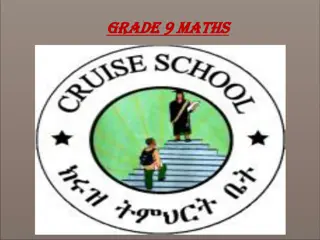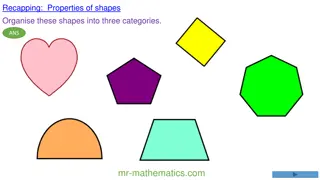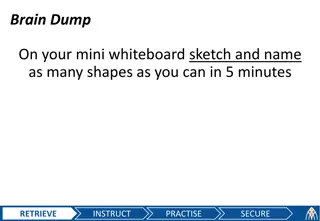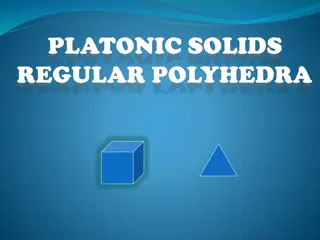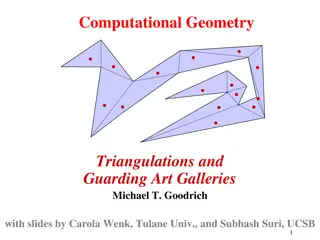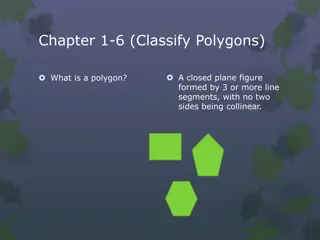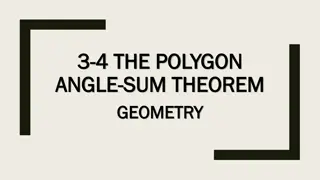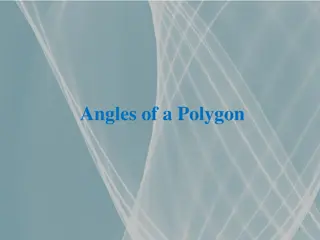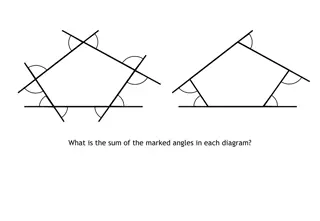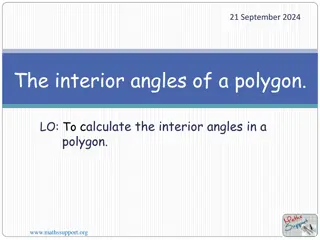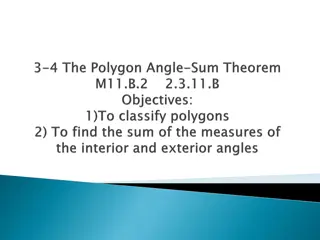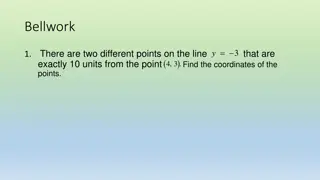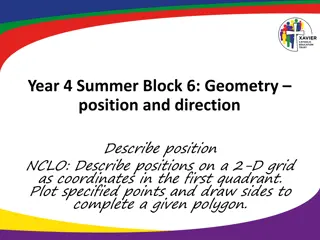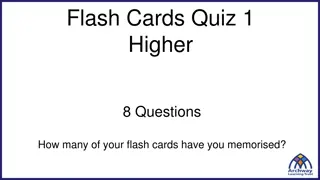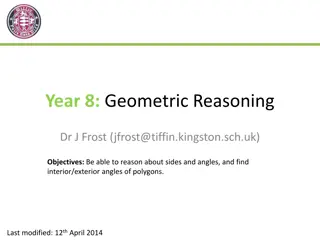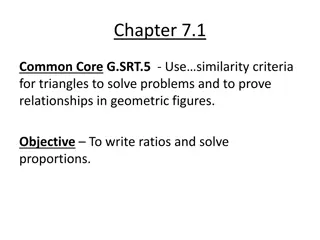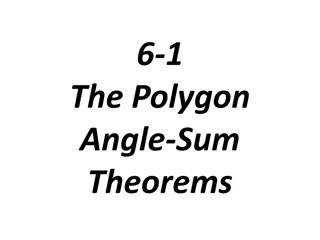Understanding Similar Polygons in Geometry
Explore the concept of similar polygons in geometry through a comprehensive slideshow developed to accompany the textbook "Big Ideas Geometry" by Larson and Boswell. Learn to identify corresponding lengths, perimeters, and areas of similar polygons, make similarity statements, and determine similarity between shapes based on angles and side proportions.
Download Presentation

Please find below an Image/Link to download the presentation.
The content on the website is provided AS IS for your information and personal use only. It may not be sold, licensed, or shared on other websites without obtaining consent from the author. Download presentation by click this link. If you encounter any issues during the download, it is possible that the publisher has removed the file from their server.
E N D
Presentation Transcript
Similarity Geometry Chapter 8
This Slideshow was developed to accompany the textbook Big Ideas Geometry By Larson and Boswell 2022 K12 (National Geographic/Cengage) Some examples and diagrams are taken from the textbook. Slides created by Richard Wright, Andrews Academy rwright@andrews.edu
8.1 Similar Polygons After this lesson I can use similarity statements. I can fi nd corresponding lengths in similar polygons. I can fi nd perimeters and areas of similar polygons. I can decide whether polygons are similar.
8.1 Similar Polygons When I show the same thing on the overhead projector and the computer monitor, the projected image is larger than what is on the screen. The image is of a different size, but the same shape as what I write. They are similar.
8.1 Similar Polygons Similar figures When two figures are the same shape but different sizes, they are similar. Similar polygons (~) Polygons are similar iff corresponding angles are congruent and corresponding sides are proportional. Ratio of lengths of corresponding sides is the scale factor. Angles ? ?, ? ?, ? ? Ratios of side lengths (scale factor) ??= ? ?? ??=?? ??=??
8.1 Similar Polygons ABC JKL a. Find the scale factor from ABC to JKL. b. List all pairs of congruent angles. c. Write the ratios of the corresponding side lengths in a statement of proportionality. Try #2
8.1 Similar Polygons ABCD ~ QRST What is the scale factor of QRST to ABCD? Find x. Try #4
8.1 Similar Polygons JKL ~ EFG. Find the length of the median ??. Try #8
8.1 Similar Polygons Perimeters of Similar Polygons If two polygons are similar, then the ratio of their perimeters is equal to the ratios of their corresponding side lengths. If ABC~ DEF, then ?? Area of Similar Polygons ??=Perimeter ??? Perimeter ??? If two polygons are similar, then the ratio of their areas is equal to the squares of the ratios of their corresponding side lengths. 2 ?? ?? =Area ??? Area ??? If ABC ~ DEF, then
8.1 Similar Polygons ABCDE ~ FGHJK, the area of FGHJK is 318 in2 Find the scale factor of FGHJK to ABCDE Find the perimeter of ABCDE Find the area of ABCDE Try #18
8.2 Proving Triangle Similarity by AA After this lesson I can use similarity transformations to prove the Angle-Angle Similarity Theorem. I can use angle measures of triangles to determine whether triangles are similar. I can solve real-life problems using similar triangles.
8.2 Proving Triangle Similarity by AA Draw two triangles with two pairs of congruent angles. Measure the corresponding sides. Are they proportional? Are the triangles similar? 55 34 55 34 AA Similarity If two angles of one triangle are congruent to two angles of another triangle, then the triangles are similar.
8.2 Proving Triangle Similarity by AA Show that the triangles are similar. Write a similarity statement. Try #2
8.2 Proving Triangle Similarity by AA Show that the triangles are similar. Write a similarity statement. QPR and QTP ABC and EDC Try #6
8.2 Proving Triangle Similarity by AA You can use similar triangles to find things like the height of a tree by using shadows. You put a stick perpendicular to the ground. Measure the stick and the shadow. Then measure the shadow of the tree. The triangles formed by the stick and the shadow and the tree and its shadow are similar so the height of the tree can be found by ratios. Suppose we use a meter stick. The stick s shadow is 3 m. The tree s shadow is 150 m. How high is the tree? Try #20
8.3 Proving Triangle Similarity by SSS and SAS After this lesson I can use the SSS and SAS Similarity Theorems to determine whether triangles are similar.
8.3 Proving Triangle Similarity by SSS and SAS SSS Similarity If the measures of the corresponding sides of two triangles are proportional, then the triangles are similar. SAS Similarity If the measures of two sides of a triangle are proportional to the measures of two corresponding sides of another triangle and the included angles are congruent, then the triangles are similar.
8.3 Proving Triangle Similarity by SSS and SAS Which of the three triangles are similar? Try #2
8.3 Proving Triangle Similarity by SSS and SAS Explain how to show that the indicated triangles are similar. SRT~ PNQ XZW~ YZX Try #9
8.4 Proportionality Theorems After this lesson I can use proportionality theorems to find lengths in triangles. I can find lengths when two transversals intersect three parallel lines. I can find lengths when a ray bisects an angle of a triangle.
8.4 Proportionality Theorems Triangle Proportionality Theorem If a line is parallel to a side of a triangle, then it separates the other two sides into proportional segments. And the converse is also true. Proportional segments line parallel to the third side.
8.4 Proportionality Theorems In RSQ with chord TU, QR = 10, QT = 2, UR = 6, and SR = 12. Determine if ?? ??. Try #4
8.4 Proportionality Theorems If three or more parallel lines intersect two transversals, then they cut off the transversals proportionally. Using the information in the diagram, find the distance TV. Try #12
8.4 Proportionality Theorems An angle bisector in a triangle separates the opposite side into segments that have the same ratio as the other two sides. Find x 12 10 x 18 Try #18


